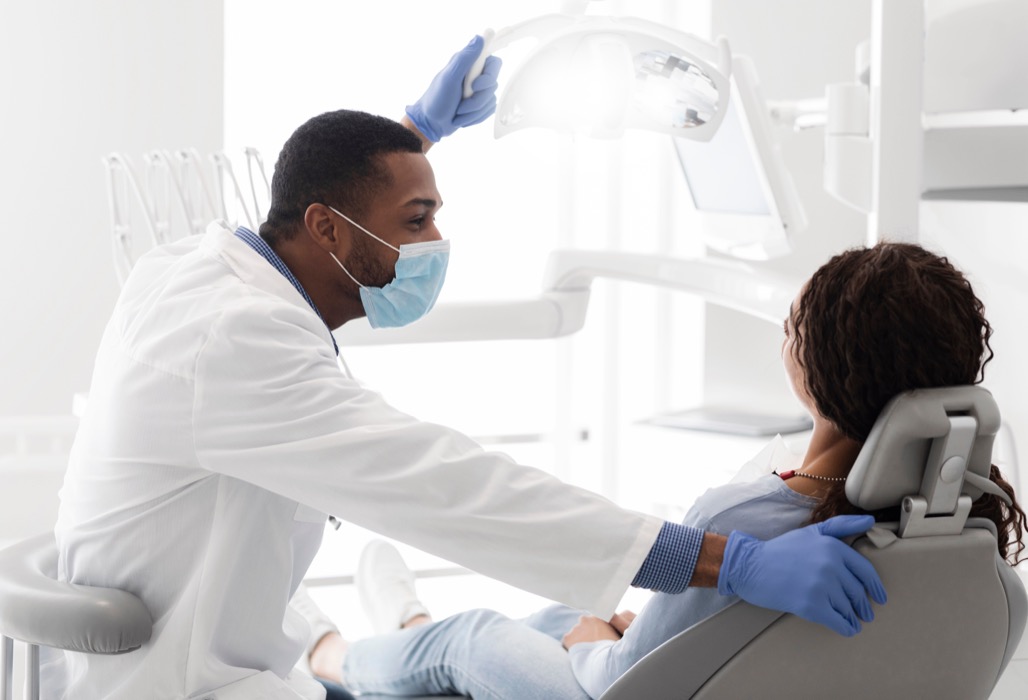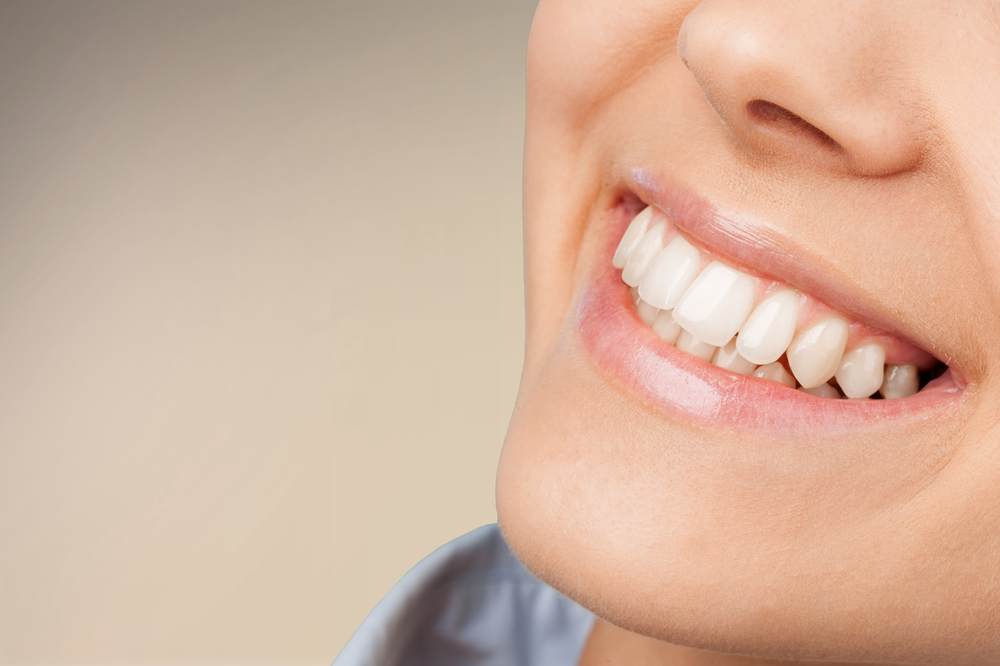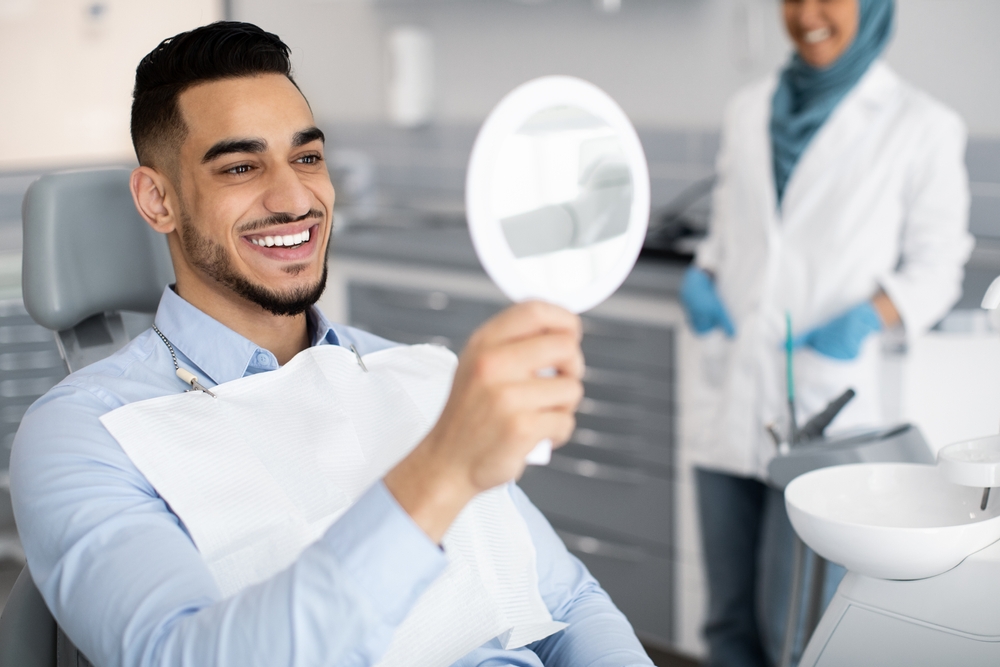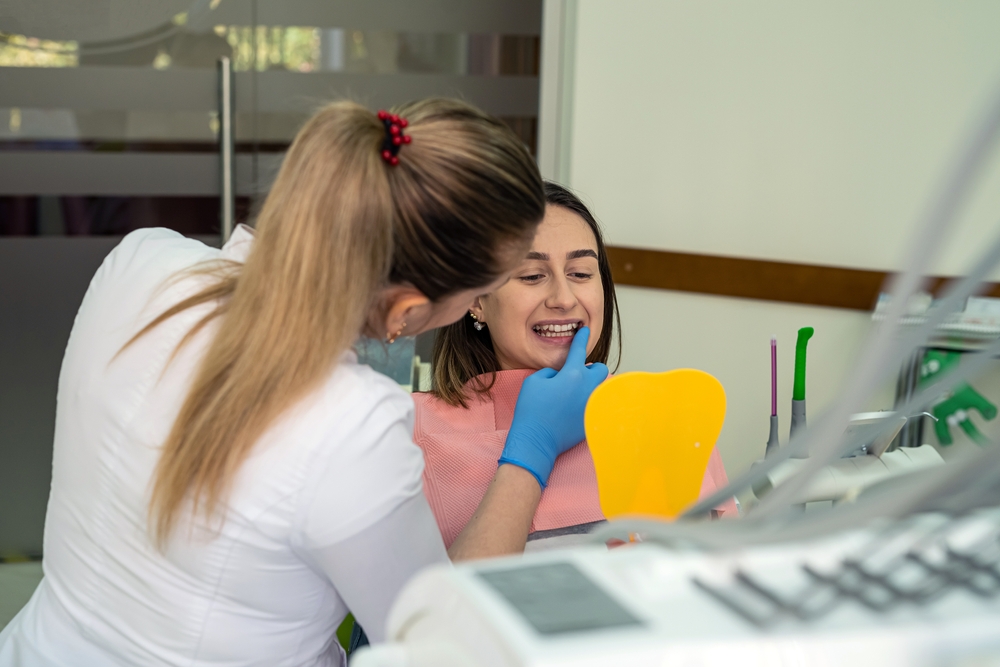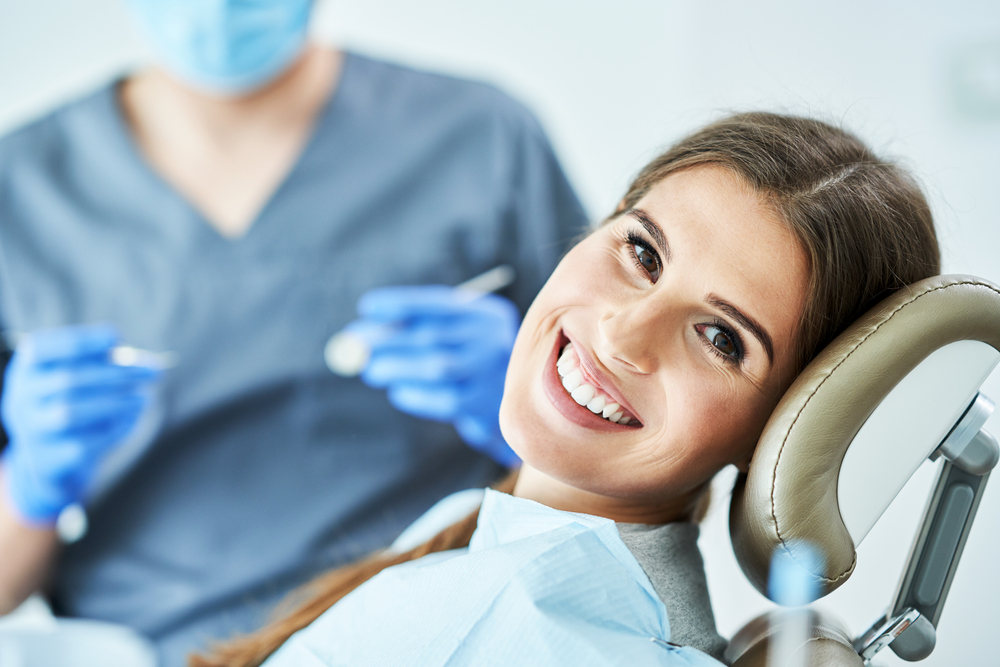Author: admin
Top Rated Dental Care Near Me in Litchfield
Securing top-rated dental care transcends finding a skilled dentist;
it’s about discovering a practice that embodies excellence in every
facet of service. Such practices are distinguished not just by their
adeptness in treating a variety of dental issues but by their unwavering
commitment to patient satisfaction and comfort. These qualities are
pivotal for anyone aspiring to maintain or improve their oral health,
ensuring every visit is as beneficial as it is reassuring.
Defining Excellence in
Dental Services
A top-rated dental practice offers an extensive suite of services
designed to address a comprehensive range of dental needs:
- Routine Cleanings and Examinations: Essential
for maintaining oral health and catching potential issues
early. - Dental Fillings: Utilizing the latest materials
for durable and aesthetically pleasing results. - Crowns and Bridges: Custom-made solutions for
restoring damaged teeth or replacing missing ones. - Orthodontics: Including both traditional braces
and modern clear aligner technologies for aligning teeth and improving
smiles. - Periodontal Care: Specialized treatments for gum
disease, ranging from preventative measures to more advanced
interventions.
Elevating the Patient
Experience
What elevates a dental practice to top-rated status is not just the
range of treatments offered but the holistic approach to patient care.
This includes:
- A Comfort-Focused Environment: From the waiting
room to the treatment chair, creating a setting that soothes and
welcomes. - Transparent Communication: Ensuring patients
understand their dental health and treatment options. - Customized Care: Tailoring treatments to meet
the unique needs and goals of each individual. - Advanced Pain Management: Offering the latest in
pain relief and sedation options to make treatments as comfortable as
possible.
Your Path to Top-Rated
Dental Care
For those seeking a dental practice that aligns with the highest
standards of care, the journey begins with identifying a provider that
not only offers a wide array of treatments but does so with a commitment
to excellence in patient experience.
Discover Exceptional Dental
Care
At our practice, we stand proud as a beacon of top-rated dental care
in the community. Our dedication to excellence encompasses not only the
comprehensive treatments we provide but also the personalized and
comfortable experiences we offer to each patient. Whether you need
routine maintenance, cosmetic enhancements, or specialized treatments,
our team is here to deliver the exceptional care you deserve.
Ready to elevate your dental health journey? Contact our office. Let
us partner with you in achieving and maintaining a radiant, healthy
smile with the utmost care and expertise.
Routine Dental Care Procedures Near Me in Litchfield
Embarking on the journey to optimal oral health can sometimes feel
overwhelming, with various symptoms to watch for and an array of
treatments to consider. Accessible, high-quality dental care near you
means that both preventative measures and responsive treatments are
readily available, ensuring that managing oral health is straightforward
and stress-free for every member of the family.
Oral health through
routine dental care
Understanding common dental symptoms and their corresponding
treatments is a crucial aspect of maintaining oral health. Here’s how
routine dental care addresses these needs:
- Gum Health Assessments: Regular check-ups
include evaluations for signs of gum disease, with treatments like
scaling and root planing available if needed. - Cavity Prevention and Treatment: Routine exams
help in detecting cavities early, with fillings or other treatments
applied to protect and preserve tooth health. - Oral Hygiene Education: Dental professionals
provide valuable insights into proper brushing and flossing techniques,
helping prevent common dental issues. - Advanced Diagnostics: Modern diagnostic tools,
including digital X-rays, offer a detailed understanding of oral health
status, enabling targeted treatments.
By offering comprehensive care that addresses a wide range of
symptoms and conditions, routine dental treatments play a vital role in
keeping oral health issues at bay.
Making
routine dental care understandable and comfortable
Demystifying dental care is at the heart of modern dentistry,
ensuring that patients are informed, comfortable, and confident in their
treatment plans:
- Clear Communication: Dentists and hygienists
take the time to explain diagnoses and treatments in understandable
terms, empowering patients with knowledge. - Comfort-focused Practices: From the waiting room
to the treatment chair, dental practices are designed with patient
comfort in mind, making dental visits more relaxing. - Family-friendly Environments: Understanding that
children may have unique fears about dental care, practices offer a
welcoming atmosphere that puts younger patients at ease.
These approaches help remove the barriers to routine dental care,
making it more accessible and less daunting for individuals and families
alike.
Your ally in dental health
For those in search of “Routine Dental Care Treatments Near Me,” we
stand as a beacon of comprehensive, compassionate dental care. Our
clinic is equipped to address the full spectrum of dental health needs,
ensuring that you and your loved ones receive the highest standard of
care.
Facing dental health questions or concerns? Reach out to us. Our team
is dedicated to providing clear, comforting, and effective dental care,
ensuring that your path to optimal oral health is both successful and
stress-free.
Dental Crowns Fillings to Improve Dental Health in Litchfield
Enhancing your smile and boosting your confidence often involves
detailed and careful dental work. These treatments not only aim to
improve oral health but are also designed to make your smile brighter
and more confident. Understanding how these procedures are performed can
demystify the process and ease any apprehensions about seeking dental
care.
The process of cavity
fillings
Cavity fillings are a common procedure designed to repair and restore
teeth that have been affected by decay:
-
Initial Examination: The dentist examines the
affected tooth and uses X-rays to determine the extent of
decay. -
Decay Removal: Using specialized dental
instruments, the dentist removes the decayed portion of the tooth,
preparing it for the filling. -
Tooth Cleaning: Once the decay is removed, the
area is thoroughly cleaned to eliminate bacteria and debris. -
Filling Application: The cavity is then filled
with a material to restore the tooth’s original shape and
function.
The process of placing
dental crowns
Dental
crowns are used to cover and protect damaged or weakened teeth,
restoring their shape, size, strength, and appearance:
-
Tooth Preparation: The dentist reshapes the
affected tooth to make room for the crown, removing a portion of enamel
to ensure a proper fit. -
Impression Taking: An impression of the tooth
and surrounding teeth is taken to create a custom crown that perfectly
matches the natural bite. -
Temporary Crown: A temporary crown may be placed
while the permanent crown is being made. -
Crown Fitting: Once ready, the permanent crown
is adjusted as needed and then cemented into place, fully encasing the
visible portion of the tooth.
Enhancing smiles with
expertise
Choosing a dental practice that specializes in cavity fillings and
dental crowns means entrusting your smile to skilled hands. These
treatments are not only about restoring dental health but are also
performed with an eye towards enhancing the overall aesthetics of your
smile, ensuring that the results are both durable and visually
pleasing.
If you’re looking to enhance your smile and boost your confidence
with dental crowns or cavity fillings, we are here to provide the expert
care you deserve. With a focus on patient comfort and using the latest
dental techniques, we’re dedicated to making your treatment experience
as positive and stress-free as possible.
We can help you
Contact us today to schedule your consultation. Let us help you
achieve the healthy, beautiful smile you’ve always wanted, with
treatments tailored specifically to your needs and goals.
Dental Crowns or Cavity Fillings Treatment Near Me in Litchfield
Navigating the path to oral health care, especially when it involves
procedures like dental crowns and cavity fillings, can evoke a mix of
emotions, from anxiety to outright fear. An exceptional dental practice
will not only address the dental issues at hand but also ensure that
every patient feels comfortable and supported at each step of their
treatment journey. This commitment to patient comfort transforms the
dental experience, making the path to a healthier smile a reassuring and
positive one.
Ensuring comfort during
cavity fillings
Cavity fillings are a common but essential procedure to halt decay
and protect your teeth. Here’s how the dental practice makes this
process comforting:
- Detailed Explanation: Before beginning, the
dentist thoroughly explains the procedure, answering any questions to
ease your mind. - Pain Management: Utilizing the latest in pain
management techniques, the practice ensures the filling process is as
comfortable as possible. - Gentle Care: Every step, from decay removal to
the actual filling, is performed with a gentle touch, emphasizing
patient comfort throughout.
Creating a
positive experience with dental crowns
Dental crowns are a significant step towards restoring the health and
appearance of damaged teeth. The practice focuses on making this process
as comfortable as can be:
- Clear Communication: The dentist provides a
step-by-step breakdown of the crown procedure, setting clear
expectations to alleviate concerns. - Custom Comfort Solutions: Whether it’s through
sedation dentistry or simply offering a comforting hand, personalized
comfort solutions are available to suit your needs. - Follow-Up Care: Post-procedure, detailed
guidance is given to ensure a smooth recovery, with the team readily
available to address any follow-up concerns.
Comfort in
dental crown and cavity filling treatment
An excellent dental practice goes above and beyond to ensure that
procedures like dental crowns and cavity fillings are not daunting
experiences but rather steps towards better oral health, undertaken with
your utmost comfort in mind. By prioritizing a patient-centered
approach, such a practice fosters an environment where concerns are
heard, and comfort is paramount.
Contact us
We understand that the thought of dental treatment can be unsettling.
That’s why we’re dedicated to making your experience as comfortable and
stress-free as possible, with a focus on gentle care and clear
communication. Whether you need a cavity filled or a dental crown, our
team is here to support you at every step, ensuring you feel confident
and at ease throughout your treatment.
Reach out to us and schedule your appointment. Let us show you how
our commitment to patient comfort can transform your dental care
experience, making your journey to a healthier smile a positive and
reassuring one.
Best-Rated Dental Care in Litchfield
Those in search of top-rated dental care are often motivated by more
than just the desire for a beautiful smile; they’re looking for clarity
and comfort in their dental care experience. Recognizing common dental
symptoms and understanding the available treatments can sometimes be
overwhelming. However, top-rated dental offices stand out by making
dental health information accessible and ensuring treatments are as
comfortable as possible, transforming potentially confusing and
uncomfortable experiences into clear, comfortable journeys toward
optimal oral health.
Navigating
Symptoms and Treatments with Ease
Top-rated dental practices excel in diagnosing and treating a wide
range of dental symptoms with precision and empathy:
- Early Detection and Treatment: From sensitivity
and pain to gum swelling, these practices use advanced diagnostics to
identify issues early, making treatments more straightforward and less
invasive. - Comprehensive Treatment Options: Whether it’s
cavities, gum disease, or misalignment, they offer a full spectrum of
treatments, using -of-the-art technology to ensure effectiveness
and patient comfort. - Specialized Care for Anxiety: Understanding that
dental anxiety is a real concern, top practices offer solutions like
sedation dentistry to make every visit more comfortable and
stress-free.
Demystifying Dental Care
What truly distinguishes top-rated dental practices is their
commitment to making dental care more understandable and less
daunting:
- Clear, Jargon-Free Communication: They
prioritize explaining dental conditions and treatment options in
language that’s easy to grasp, ensuring patients feel informed and
empowered to make decisions about their care. - Educational Resources: Providing patients with
accessible information on oral health care, from preventive tips to
detailed guides on what to expect during treatments, helps demystify the
process and reduce anxiety. - Personalized Consultations: Taking the time to
discuss each patient’s specific concerns and treatment options
individually, fostering a sense of trust and partnership in
care.
Embracing Comfort in Dental
Care
Ensuring patient comfort is at the heart of the care provided by
top-rated dentists:
- Comfort-Enhanced Environments: From the
reception area to the treatment room, every space is designed with
patient comfort in mind, creating a calming atmosphere that eases
nervousness. - Gentle Treatment Methods: Employing techniques
that minimize discomfort, these practices ensure that treatments, no
matter how minor or complex, are performed with a gentle touch. - Follow-Up Care: Post-treatment, they offer clear
guidance on aftercare and are readily available to address any follow-up
concerns, ensuring a smooth recovery.
For people looking for dental care that combines top-rated treatments
with an emphasis on clear communication and comfort, there’s a wealth of
options that go beyond merely addressing dental health needs. These
practices are dedicated to making dental visits more understandable and
less intimidating, thereby changing the way dental care is perceived and
experienced.
Exceptional care nearby
If clarity, comfort, and exceptional care are what you seek from your
dental care experience, look no further. We embody these principles,
offering a comprehensive approach to dental health that prioritizes your
comfort and understanding at every step. Contact us to discover how we
can make your dental health journey clearer and more comfortable,
ensuring you receive the top-rated care you deserve.
Family Dentistry in Litchfield
Navigating the world of dental health can be complex, especially when
it involves caring for a family. Understanding common dental symptoms
and the treatments available is crucial for maintaining the oral health
of both children and adults. It will help to focus on identifying
symptoms and exploring the treatments offered by family dentists to
ensure your family receives the best possible care.
Become aware of family
dental health
-
Symptom Identification: Learning to recognize
the early signs of dental issues is the first step toward preventative
care. Symptoms such as toothache, sensitivity, and gum swelling can
indicate underlying problems that need immediate attention. -
Information Gathering: Equip yourself with
knowledge about common dental conditions and their treatments.
Understanding what treatments are available can alleviate concerns and
prepare you for discussions with your dentist. -
Appointment Scheduling: Act promptly by
scheduling an appointment at the first sign of dental discomfort. Early
intervention can prevent the progression of many dental issues, saving
time and ensuring comfort.
Get a good
diagnosis of family dental health
-
Comprehensive Exams: Initial examinations play a
critical role in diagnosing dental conditions. A thorough dental exam
can uncover hidden issues before they become more serious, ensuring
timely treatment. -
Treatment Options: Explore the variety of
treatment options available for diagnosed conditions. Incorporating
treatments like oral screenings, digital X-rays, regular check-ups,
professional cleanings, teeth polishing, and restorative procedures such
as crowns and fillings is vital for complete oral health care. These
practices ensure the prevention, early detection, and effective
treatment of dental issues, contributing to a lasting and confident
smile. -
Preventative Measures: Learn about preventative
treatments and practices to avoid future dental issues. Proper brushing
and flossing techniques are examples of preventative measures that can
be discussed with your dentist.
Ongoing Dental Health
-
Aftercare Instructions: Follow your dentist’s
aftercare instructions carefully to ensure a swift and smooth recovery.
Proper aftercare is essential for the success of many dental treatments
and can significantly affect healing times. -
Regular Check-Ups: Maintain a schedule of
regular dental check-ups to monitor the health of your family’s teeth
and gums. These check-ups allow for early detection of potential issues
and help keep your family’s oral health on track. -
Education on Maintenance: Encourage ongoing
education about oral hygiene and preventive care at home. Consistent
oral hygiene practices are vital for preventing future dental problems
and maintaining the results of any treatments.
Check your
family’s dental symptoms and get treatment
We are dedicated to providing comprehensive care that addresses both
the symptoms and underlying causes of dental conditions. Our goal is to
ensure that every member of your family receives personalized treatment
plans that contribute to long-lasting oral health.
If your family is experiencing dental symptoms or if you’re seeking
preventive care, don’t hesitate to contact us. We’re here to offer the
guidance and treatment options necessary to keep your family’s smiles
healthy and bright.
5 Questions to Consider Before Scheduling your Teeth Whitening Treatment in Litchfield
If you’re planning to get your teeth whitened, it’s important that you do your research to find the right dentist and dental practice. The bleaching procedure is generally safe and effective when done by a dentist during the first visit, and under a dentist’s supervision for subsequent treatments. That said, everyone should first visit a dentist for a thorough examination and diagnosis to ensure you’re a good candidate for a safe, brighter, whiter smile.
Here are some questions to help you choose the right dentist:
Can teeth cleaning and polishing brighten my teeth without bleaching?
Professional teeth cleaning and polishing is done in order to remove calculus and surface stains caused by colored drinks like tea and red wine, tobacco products, foods, and so on. However, this will not change the color of stained or yellowing teeth. Teeth cleaning can help you remove deep stains and discoloration that won’t go away with routine cleaning and polishing.
How is in-office teeth whitening done?
The dentist applies a bleaching product (usually hydrogen peroxide) on the surface of your teeth using trays that fit snugly on your teeth. The trays stay in place for a short period of time to break down the agent into oxygen, which then penetrates tooth enamel to change the shade of your teeth.
Will I achieve the results I want?
Yes. Most cases of tooth whitening are successful. That said, the treatments work differently depending on the extent of discoloration or staining at the start of the procedure. Fortunately, your dentist will discuss with you about your treatment plan and inform you beforehand about the best way to whiten your teeth, any difficulties, and even the expected results.
Can teeth whitening be done outside a dentist’s office?
It’s recommended that you consult a dentist to design your bleaching plan that can then be done in the office or at home with a customized teeth whitening kit. This is important because dentists are trained to choose the best treatment plan for your case; estimate the improvement in shade that you will achieve; and inform you how long your treatment will last.
In which situations might tooth whitening be unsuccessful?
Tooth whitening only helps to improve the shade of your natural teeth. This means that it may not be successful when used on unhealthy teeth, teeth with exposed roots, or teeth that have been restored with fillings, crowns, veneers, or have received root treatments.
Please consult your dentist to discuss your bleaching plan and the expected results of your teeth whitening treatment.
Why Teeth Cleanings in Litchfield are Vital To Your Health
Studies show that as many as 90% of adults experience some form of periodontal disease at one point in their lives. Gum disease is caused by the unchecked build-up of bacteria in your mouth. In severe cases, the bacteria can get into your bloodstream and make its way to various body tissues and exacerbates diabetes, heart disease, and other illnesses. Your dental professional can help you manage your oral health and prevent bacteria buildup through dental cleanings.
What Happens When You Don’t Get Your Teeth Cleaned?
The warm and moist environment in your mouth is very hospitable for the growth of bacteria, which manifests as either plaque, a biofilm formed by bacteria colonies living in your mouth, or calculus (tartar), which is the calcified and mineralized form of plaque when it stays on your teeth for too long.
Without professional cleaning, the bacteria in your mouth can accumulate to a point where it becomes active and destructive, resulting in:
- Cavities – plaque is responsible for producing acid that can erode tooth enamel causing uneven tooth wear and even cavities
- Tooth discoloration – tartar is a hard substance that forms on your teeth and attracts more harmful bacteria, ruining the appearance of your smile.
- Gingivitis – this is the first stage of gum infection, which is characterized by gum inflammation, swelling, and reddening. Due to sensitive gums, you may also notice some blood on your toothbrush or when rinsing your mouth after brushing. Fortunately, gingivitis can be successfully treated with professional dental cleaning and an improved at-home oral care routine.
- Periodontitis – If there are no interventions, gingivitis can advance to a more serious and chronic case of gum disease known as periodontitis or periodontal disease. It affects the foundation of your teeth – the bone tissue connecting your teeth to the jaw. If not treated promptly, periodontitis can cause severe bone loss that loosens your teeth with some even falling out. Though it’s irreversible, dental professionals can help you manage the symptoms and improve your oral health.
Your dentist can check for cavities during routine visits, and diagnose periodontal disease by measuring the depth of your gum pockets (space between the teeth and gums), which should be between 1 and 3 mm for a healthy mouth. The dentist will also check for bleeding sites, and assess the extent of bone loss through digital X-rays and clinical observation. Based on the results, they will recommend the best type of dental cleaning in Litchfield to solve any issues and improve your oral health.
Family Dentistry Near Me in Litchfield
A beautiful smile is more than just an aspect of appearance; it’s a
window to your confidence and well-being. Family dentistry is at the
forefront of ensuring that every family member, from the little ones
flashing their first toothy grins to adults seeking a brighter,
healthier smile, has access to the care they need. The array of common
treatments provided by family dentists not only enhances dental health
but also boosts confidence by ensuring that your smile is as radiant as
it is healthy.
General
dentist treatments to enhance your smile and confidence
The journey to a confident smile often involves various dental
treatments designed to improve both the health and aesthetics of your
teeth. Here are several ways family dentistry can help:
-
Check-ups: Routine dental check-ups are
comprehensive evaluations of your oral health, including an examination
of your teeth, gums, and mouth to detect any potential issues early on.
These appointments often include a discussion about your dental history
and any concerns you might have, allowing for proactive management of
your oral health. -
Cleanings: Professional dental cleanings involve
the thorough removal of plaque and tartar accumulation on your teeth and
along the gumline. This preventive treatment is crucial for preventing
gum disease and tooth decay, ensuring your mouth stays healthy and your
breath fresh. -
Crowns: Dental crowns are custom-fitted caps
placed over a damaged or decayed tooth to restore its size, shape,
strength, and appearance. Crowns are used to protect a weak tooth,
restore a broken tooth, cover a tooth with extensive decay, or improve
the cosmetic appearance of a tooth. -
Fillings: Dental fillings are used to repair
cavities or minor fractures in teeth. After removing the decayed portion
of the tooth, the dentist fills the cavity with a durable
material.
These treatments reflect the comprehensive approach family dentistry
takes to not just maintaining but also enhancing the smiles of all
family members.
The impact of a
confident smile for your family
The benefits of these common treatments extend far beyond the
physical improvements they provide. A confident smile can significantly
impact various aspects of your life:
-
Social Interactions: A bright, healthy smile can
make a positive first impression and improve your interactions with
others. -
Self-Esteem: Improvements to your smile can
boost your self-confidence, making you more comfortable in your
skin. -
Professional Opportunities: Confidence in your
smile can translate into confidence in professional settings,
potentially opening doors to new opportunities.
Family dentistry brings the power of a confident smile and strives to
provide treatments that not only ensure oral health but also enhance the
quality of life through improved aesthetics.
Find a family dentist near you
Choosing a dentist as your family dentistry practice means choosing a
team that values the impact of a healthy, confident smile. We offer a
range of treatments designed to improve the appearance of your teeth and
boost your confidence, ensuring that every family member can enjoy the
benefits of a radiant smile.
If you’re ready to enhance your smile and confidence with the help of
a trusted family dentist, contact us today. We’re committed to providing
the care you need to shine your brightest, inside and out.
General Dental Exam in Litchfield
The cornerstone of maintaining a radiant and healthy smile lies in
the thoroughness of dental exams. These exams are not just a routine
check-up; they are a comprehensive assessment that plays a crucial role
in detecting, preventing, and treating dental issues before they
escalate into more significant health concerns. Focusing in detail on
the exam process can illuminate how this fundamental aspect of general
dental care is instrumental in safeguarding not only your oral health
but also enhancing your overall well-being.
The Process of a Dental Exam
- Medical History Review: Understanding your
overall health, medications, and any allergies to tailor the dental care
to your specific needs. - Visual Inspection: Using advanced tools and
lighting to examine all surfaces of your teeth, the gums, and the mouth
for signs of decay, gum disease, or other oral health issues. - X-rays: Employing low-radiation digital X-rays
to view beneath the surface of your gums and between teeth, identifying
hidden problems such as impacted teeth, bone decay, cysts, tumors, and
more. - Oral Cancer Screening: Examining your lips,
tongue, throat, tissues, and gums for any signs of oral cancer, a
critical step given the increasing prevalence of the disease. - Evaluation of Existing Dental Work: Checking
fillings, crowns, bridges, and any other previous dental work to ensure
they are in good condition and functioning properly. - Gum Health Assessment: Measuring the depth of
the spaces between your teeth and gums to detect any signs of gum
disease, which can be an indicator of systemic health issues like
diabetes and heart disease.
Following the detailed exam, a personalized treatment plan is crafted
to address any identified issues, incorporating treatments such as:
- Professional Cleanings: To remove plaque and
tartar buildup. - Dental Crowns: To restore damaged
teeth. - Cavity Fillings: To repair teeth affected by
decay.
By focusing primarily on the comprehensive dental exam, patients can
gain a deeper understanding of their oral health status and the
proactive steps necessary to maintain or improve it. This detailed
approach ensures that every aspect of your oral health is evaluated,
forming the basis for any further treatments needed to enhance your
smile and confidence.
Embrace Comprehensive Dental Care
We pride ourselves on offering detailed and comprehensive dental
exams as the foundation of our general dental care treatments. Our
dedication to thorough assessments ensures that we can provide
personalized, effective care tailored to your unique needs.
If you value a detailed approach to your dental health, contact us to
schedule your next dental exam. Let us be your partner in achieving and
maintaining optimal oral health, laying the groundwork for a brighter,
healthier future.

6 Month Smiles
Six Month Smiles is a short term orthodontic treatment that involves wearing clear braces to straighten and improve tooth alignment. This alternative treatment is a convenient approach to a straighter smile without the time commitment.
Learn more

